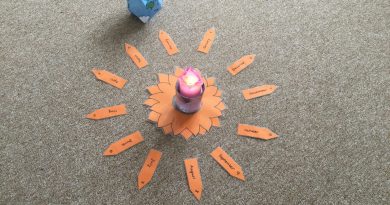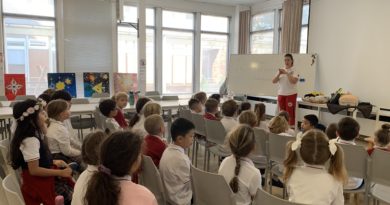How can children use self-assessment to enhance their own learning?
Self-assessment is a tool used to allow children to evaluate their own learning during the lesson. For example, I often use a step to success criteria in which children self-assess against to help them monitor their own development in a lesson (Sadler, 1989). This form of assessment for learning shares learning goals with pupils to tell them where they are in the learning journey, where they need to go and how best to get to the expected level (Assessment Reform Group, 2002).

Self-assessment makes children begin to think about their own practice, by encouraging them to take more responsibility of their own learning. Research indicates that using self-assessments enables pupils to become ‘learners for life’ because they see self-assessment as a motivating and engaging experience. As a result, Clarke (2005) found that children seemed to learn more from the self-assessment than through any other process.
It provides students with a real choice in their learning. Black and Wiliam (1998) indicated that giving pupils a greater stake in their learning will raise the attainment in their academic work, therefore, developing insiders rather than consumers of the feedback (Sadler, 1989). Having a greater input in their learning is thought to help children begin to take control and address the missing gaps in their knowledge (Bereiter and Scardamalia, 1987).

However, children need a significant period of time, over the course of several months, to learn how to self-evaluate appropriately. I often find this to be true in my own lessons because it can be a difficult skill to become a critical thinker of ones own practice. Research has shown self-assessment is not a quick fix process and it takes time for children to learn how to take responsibility for their own learning (Black and Wiliam, 1998). After all, the desired outcome of a classroom environment is for students to focus on intellectual growth, (Wiliam, 2012), and become resilience learners.
References:
Assessment Reform Group. (2002). ‘Assessment for Learning: 10 principles’. Available at: https://www.aaia.org.uk/content/uploads/2010/06/Assessment-for-Learning-10-principles.pdf (Accessed on 9 Feb 2017).
Black, P. and Wiliam, D. (1998) ‘Inside the black box: Raising standards Through Classroom Assessment’. London: King’s College School of Education.
Clarke, S. (2005) ‘Formative Assessment in Action’. Abingdon: Hodder Murray.
Sadler, D. R. (1989). ‘Formative assessment and the design of instructional systems’, in Instructional Science,18 (2), pp. 119–144. Available at: http://link.springer.com/article/10.1007/BF00117714 (Accessed on 9 Feb 2017).
Wiliam, D. (2012) ‘Feedback: part of a system’, in Educational Leadership. 70(1), pp. 31-34. Available at: http://web.a.ebscohost.com.bathspa.idm.oclc.org/ehost/detail/detail?sid=b0808290-745e-4f65-accd-45f8858321eb%40sessionmgr4010&vid=0&hid=4112&bdata=JnNpdGU9ZWhvc3QtbGl2ZQ%3d%3d#db=aph&AN=82055859 (Accessed on 7 Feb 2017).




